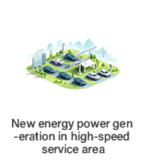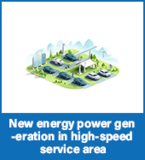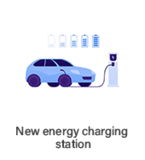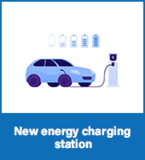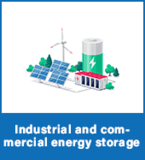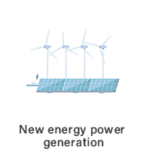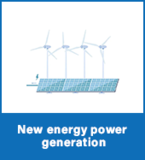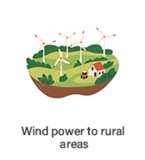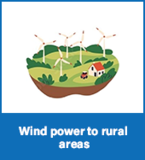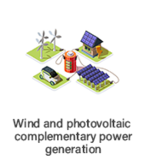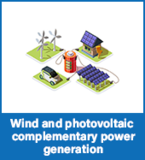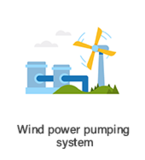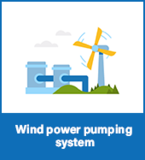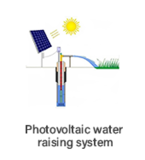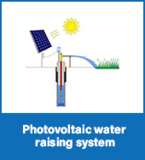INDUSTRISL ANG COMMERCIAL ENERGY STORAGE
Project background and objectives:
With the expansion of enterprise scale and business growth, the demand for electricity continues to increase, and traditional energy supply models face many challenges, such as rising energy costs and intensified environmental pollution. To address these challenges, our company has decided to adopt photovoltaic wind power storage solutions, aiming to meet the growing electricity demand of the enterprise through the utilization of renewable energy, while achieving the goals of green, low-carbon, and sustainable development.
System composition:
一、Photovoltaic power generation system
Design and install efficient photovoltaic modules based on factors such as the roof area and lighting conditions of the enterprise, and construct a photovoltaic power generation system. By utilizing the photovoltaic effect to convert solar energy into electrical energy, we provide clean and renewable sources of electricity for businesses.
二、 Wind power generation system
Install wind turbines in the vicinity or suitable areas of the enterprise to convert wind energy into electrical energy. The wind power generation system needs to be reasonably arranged based on the assessment results of local wind resources to ensure power generation efficiency and economy.
三、 Energy storage system
Equipped with high-capacity and long-life energy storage battery packs for storing excess electricity generated by photovoltaic and wind power generation. When there is insufficient light or weak wind, the energy storage system can release electrical energy to ensure the continuity and stability of the enterprise's electricity consumption.
Introduce advanced Battery Management System (BMS) to monitor the status of energy storage batteries in real-time, ensuring safe and efficient operation of the batteries.
四、Intelligent microgrid system
Build an intelligent microgrid system that integrates and optimizes photovoltaic power generation systems, wind power generation systems, energy storage systems, and the existing power grid of the enterprise. Through intelligent scheduling and control, collaborative work between various systems is achieved to ensure the reliability and economy of enterprise electricity consumption.
五、Monitoring and operation platform
Establish a remote monitoring and operation platform to monitor the real-time operation status and power generation efficiency of devices such as photovoltaic panels, wind turbines, and energy storage batteries. Through data analysis, potential faults can be alerted in advance, equipment operation strategies can be optimized, and overall system efficiency can be improved.
Implementation steps:
1. Requirement analysis and planning
Conduct a detailed analysis of the electricity demand of enterprises, determine the installed capacity of photovoltaic and wind power generation, and the capacity requirements of energy storage batteries.
Develop project planning schemes, including project site selection, equipment selection, layout design, etc.
2. Equipment procurement and installation
Purchase key equipment such as efficient photovoltaic modules, wind turbines, and energy storage batteries to ensure that the quality and performance of the equipment meet project requirements.
Organize a professional construction team to install and debug equipment to ensure stable system operation.
3. System integration and debugging
Integrate photovoltaic power generation systems, wind power generation systems, energy storage systems, and smart microgrid systems to achieve seamless integration between each system.
Conduct system debugging and testing to ensure that all systems work together and meet the electricity needs of the enterprise.
4. Training and Delivery
Provide system operation and maintenance training to enterprise operation and maintenance personnel to ensure that they are proficient in system usage and maintenance skills.
Complete project delivery and officially put into operation.
Benefit analysis:
一、Economic benefits
Reduce the cost of electricity for enterprises: By using photovoltaic and wind power generation, reduce dependence on traditional energy sources and lower electricity bills.
Increasing revenue sources: Selling excess electricity to power grid companies or surrounding enterprises to increase the company's revenue sources.
二、Environmental benefits
Reduce carbon emissions: Both photovoltaic power generation and wind power generation are clean energy sources that do not produce pollutants or greenhouse gas emissions during use, which helps to reduce the carbon footprint of enterprises.
Enhance corporate image: Adopt green energy solutions to enhance the company's environmental image and sense of social responsibility.
三、Social benefits
Promote the development of renewable energy: Through the demonstration effect of enterprises, drive the development of renewable energy industry in surrounding areas.
Promote energy structure optimization: increase the proportion of renewable energy in energy consumption, promote energy structure optimization and transformation upgrading.



